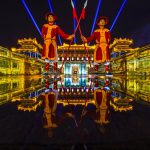The Fujian Assembly Hall (Hội quán Phúc Kiến) is one of the standout landmarks in the ancient town of Hoi An. Originally built by Chinese merchants hundreds of years ago, this site has been carefully restored and holds great historical, cultural, and artistic value.
Table of Contents
An Overview of the Fujian Assembly Hall in Hoi An
Fujian Assembly Hall in Hoi An was originally built by long-standing Fujian residents living in this ancient town. As it is located right in the heart of Hoi An Ancient Town, it is very convenient for tourists to visit and explore.
Where is the Fujian Assembly Hall located?
The Fujian Assembly Hall is situated at 46 Tran Phu Street, Cam Chau Ward, Hoi An. In February 1990, it was officially recognized as a national historical and cultural relic.
To reach the assembly hall from Da Nang, visitors can follow these routes:
- Route 1: Drive along Vo Nguyen Giap Street up to Truong Sa Street. Then turn into Lac Long Quan – Hai Ba Trung – Nguyen Cong Tru Street. Finally, go straight on Nguyen Truong To Street, turn onto Le Loi Street, and make your way to Phan Chau Trinh Street to reach the assembly hall.
- Route 2: Drive along Le Van Hien Street straight to DT607. Once you reach Hoi An, follow Ly Thuong Kiet Street, then turn right onto Nguyen Truong To, head down Le Loi, and continue onto Phan Chau Trinh Street. After a short distance, you will arrive at the assembly hall.
The Historical Origins of the Fujian Assembly Hall in Hoi An
According to some remaining historical documents, the Fujian Assembly Hall was built in 1697. Initially, it was constructed with the main purpose of worshiping the river gods, praying for favorable weather and prosperous business for the local community. Today, in addition to worship, the assembly hall also serves as a meeting place for the Fujian community of old.
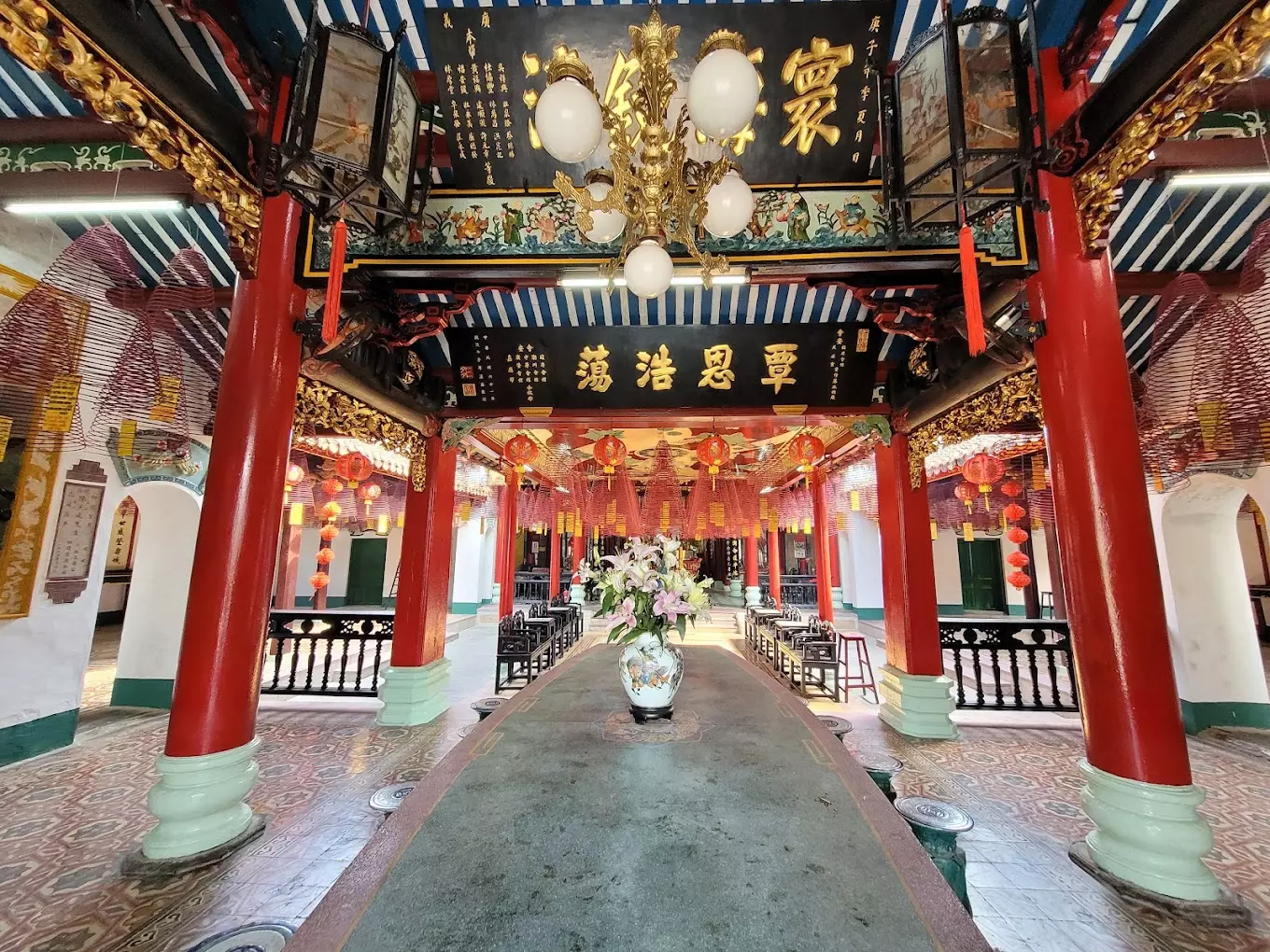
In 1649, the Qing Dynasty, with its growing power, overthrew the Ming Dynasty, marking the rise of the Manchu Qing rule. Many loyal Ming generals refused to submit to the new regime, leading several rebellions. However, these uprisings were unsuccessful due to weak forces. Eventually, those who refused to surrender moved with their families to Southeast Asia.
Hoi An was one of the places they settled, establishing the Minh Huong village. Over time, this area became home to people from Chaozhou, Fujian, Guangdong, and Hainan. Each group built its own assembly hall named after their homeland, aiming to create a sense of unity and mutual support. Thanks to the contributions of the Fujian community, the assembly hall gradually became more magnificent and well-preserved.
Ticket Prices for Visiting the Fujian Assembly Hall in Hoi An
The Fujian Assembly Hall, like other attractions in the town, is open from 7 AM to 5 PM daily. Visitors to Hoi An can freely explore the assembly hall during these hours.
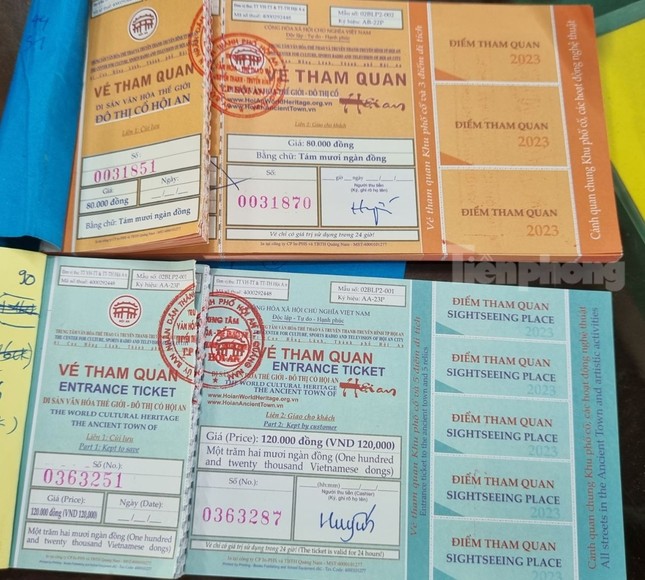
To fully experience the assembly hall, guests are required to purchase an entry ticket. Each ticket allows access to three additional sites among the 21 other attractions in the city. For Vietnamese visitors, the ticket price is 80,000 VND per person, while foreign visitors are charged 150,000 VND each.
Note:
- Each entry ticket is valid for 24 hours.
Exploring the Unique Architecture of the Fujian Assembly Hall
Among all the assembly halls in Hoi An, the Fujian Assembly Hall stands out with its beautiful and unique architecture.
The Grounds of the Fujian Assembly Hall
The grounds of the assembly hall are incredibly spacious. In the 17th century, it was regarded as having one of the most beautiful and representative courtyards in the port town. The architectural design of the assembly hall reflects traditional temple aesthetics, featuring a large Tam Quan Gate and a distinctive yin-yang tiled roof.
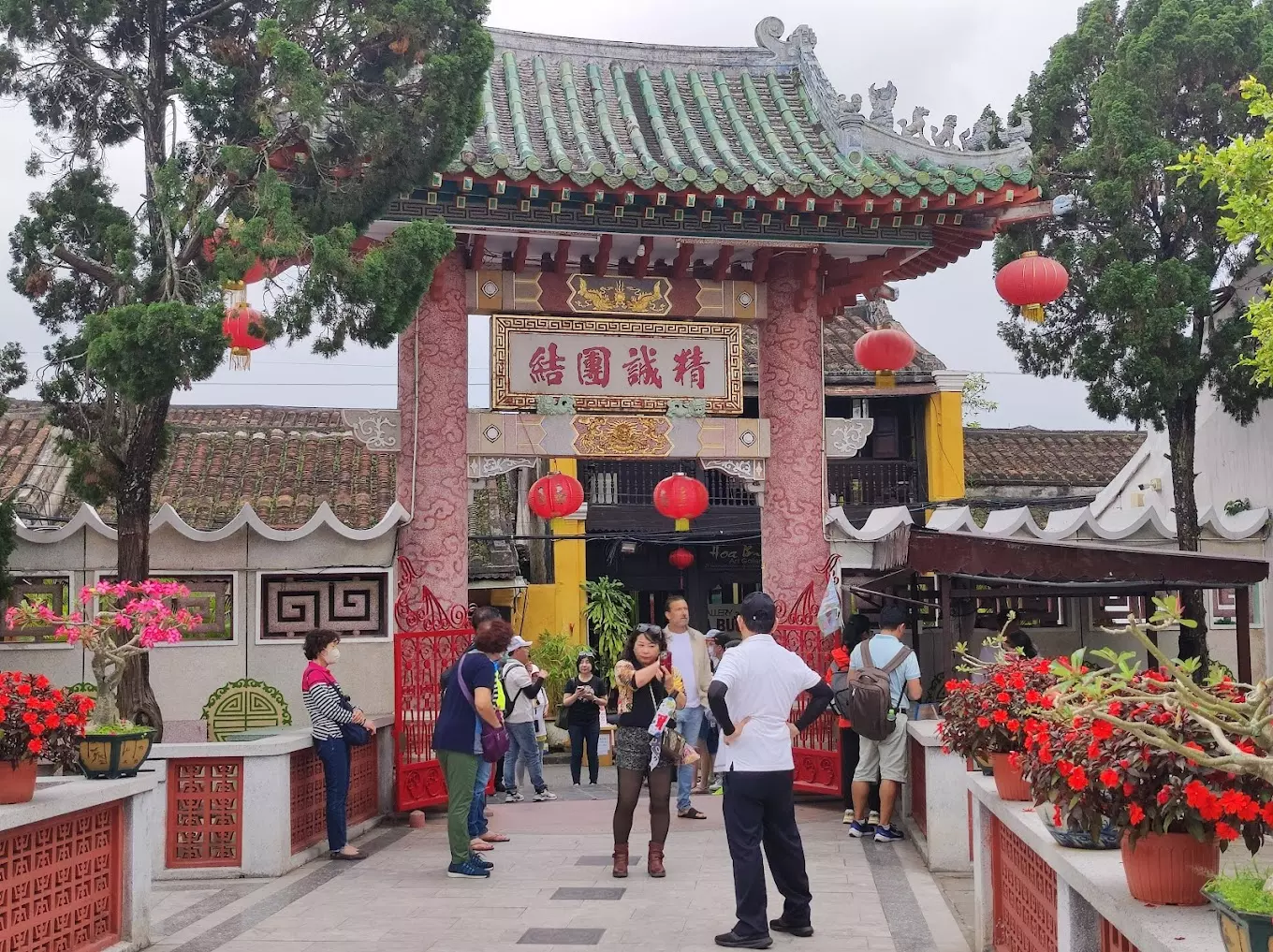
Within the courtyard, numerous potted plants and miniature landscapes enhance the beauty of the space. One of the most striking features is the statue of a carp transforming into a dragon. On one side, there is a stone table set used for meetings and business discussions among Fujian merchants. Visitors can stroll around the grounds to wish for health and prosperity for their families while enjoying the refreshing atmosphere.
The Main Hall of the Fujian Assembly Hall
The main hall of the Fujian Assembly Hall is dedicated to Thien Hau, the Holy Mother. The people of Fujian historically worshipped Thien Hau, always praying for her protection and safety during their business activities and fishing voyages at sea.
Not only in this assembly hall but also in most temples throughout Hoi An, Thien Hau is revered. In the spiritual world of the ancient Chinese, she is regarded as the goddess of the sea, constantly helping fishermen navigate the waters safely.
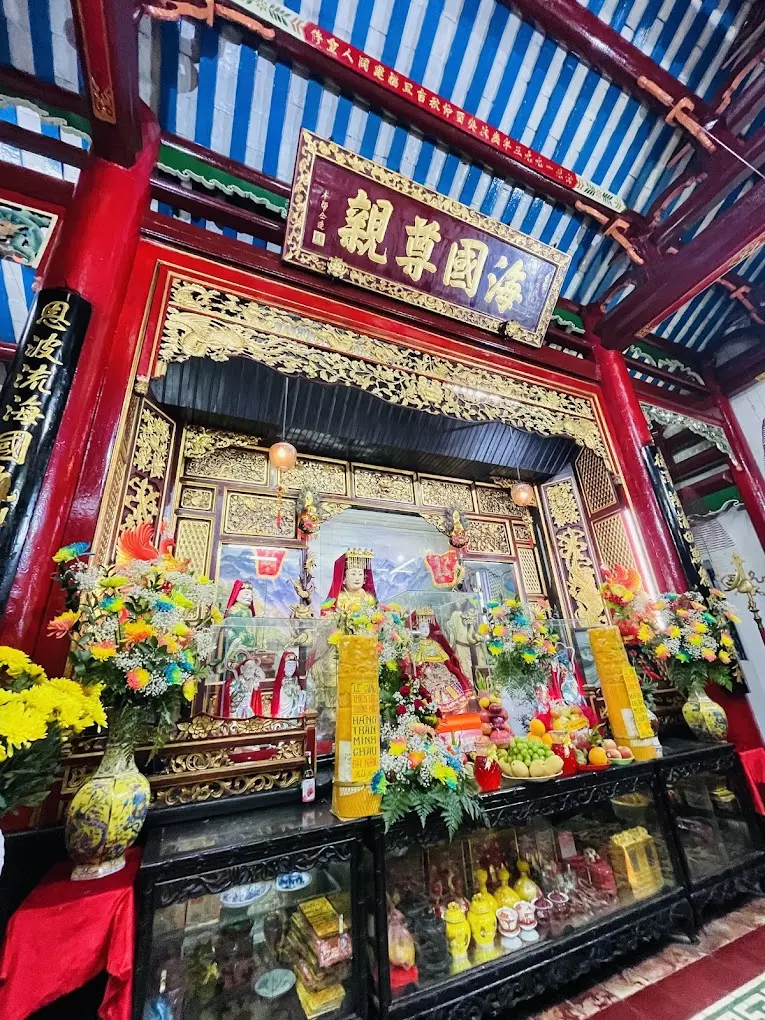
To the right of Thien Hau is the deity Thien Ly Nhan. Known for having the ability to see a hundred miles away, this deity ensures justice for the people. In addition to these two deities, the main hall also venerates Thuan Phong Nhi, the god capable of hearing from great distances. Both of these deities accompany Thien Hau to assist her in helping the community.
The altars are intricately carved with numerous elegant and unique designs. The support pillars are sturdy and adorned with red and gold paint. As a result, when you step inside, you will immediately feel the solemn atmosphere of the assembly hall.
Photo Spots at the Fujian Assembly Hall in Hoi An
When visiting the Fujian Assembly Hall, tourists should not miss the opportunity to capture beautiful photos at the following locations:
Tam Quan Gate
The Tam Quan Gate is the entrance to the assembly hall. Above the gate, the inscription reads “Kim Son Tu.” On either side of the gate stand Ong Nhat and Ba Nguyet, two deities representing heaven and earth, yin and yang. From the Tam Quan Gate, you can see three main entrances, each named with a unique meaning: Thien (Heaven), Dia (Earth), and Nhat (Human).
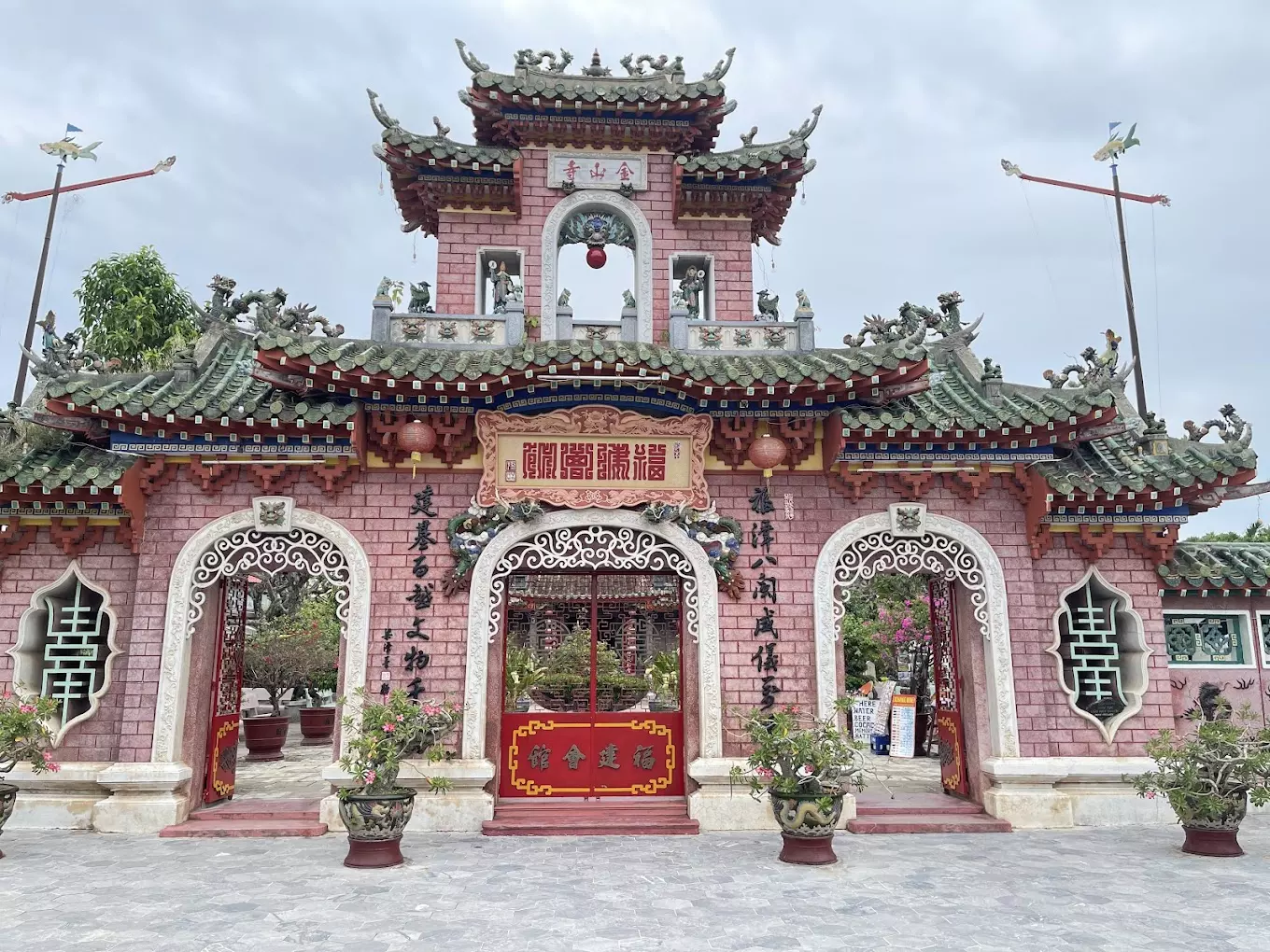
On regular days, the Tam Quan Gate opens two side entrances, while the central door is reserved for major festivals. The gate was renovated at the end of 1975, with all details meticulously crafted from ceramics. The curved roof is covered with yin-yang tiles and adorned with majestic, twisting dragon motifs.
The Tam Quan Gate has long been a favorite photo spot for visitors. This backdrop, characterized by deep red hues and eye-catching dragon and phoenix patterns, guarantees that you will take stunning photos here.
Carp Overcoming the Dragon Gate
As soon as you step through the Tam Quan Gate, you will immediately notice the statue of the Carp Overcoming the Dragon Gate. This statue is located within a miniature landscape. In the past, many legends told that the carp brought abundant water to the people. Therefore, numerous individuals have revered and created statues of this fish.
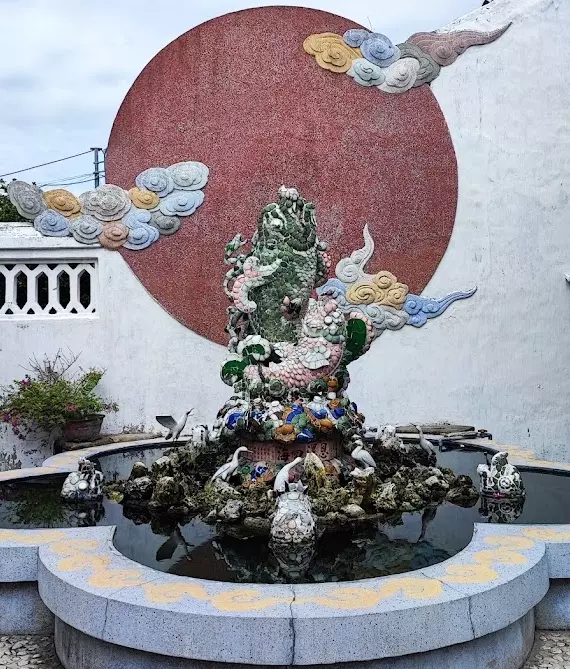
The Carp Overcoming the Dragon Gate statue in the assembly hall’s courtyard is made of stone. Its body is intricately carved with a variety of colors. Behind the statue is a round, delicate wall, creating a stunning background for photographs.
Dragon – Lion – Turtle – Phoenix
According to the teachings of our ancestors, the Dragon, Lion, Turtle, and Phoenix are known as the Four Sacred Animals (Tứ Linh). They represent the strength of four celestial creatures and symbolize water, fire, earth, and wind. When you visit the assembly hall, you will find all four of these animals within the courtyard.
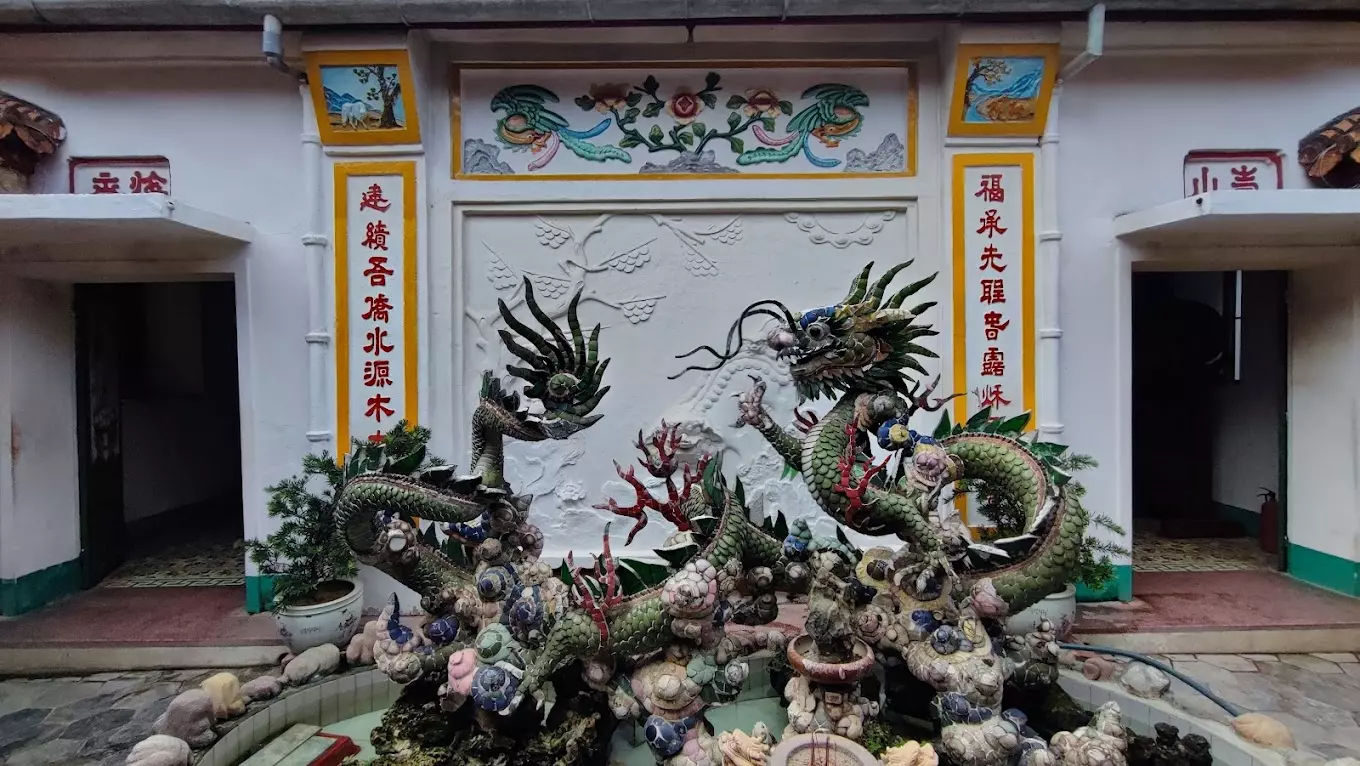
The Dragon is intricately carved with detailed and exquisite lines, representing authority. The Lion symbolizes luck and good fortune. The Turtle represents immortality, while the Phoenix signifies nobility and high status.
The Large Incense Rings Inside the Fujian Assembly Hall
The large incense rings inside the main hall of the Fujian Assembly Hall are a significant highlight that many visitors notice. This tradition has existed for a long time within the assembly hall.
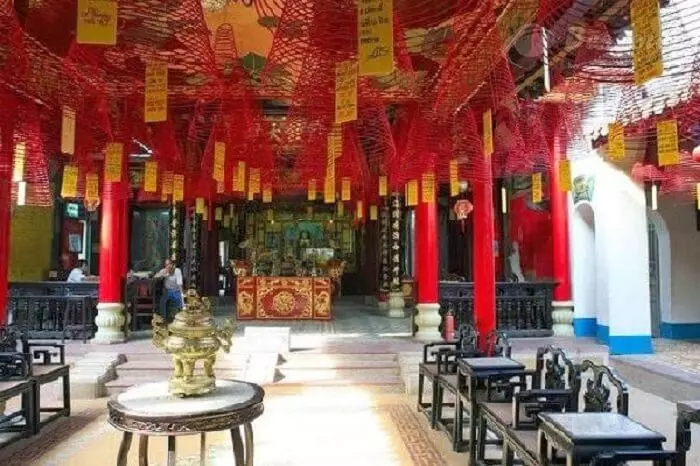
Visitors who come to enjoy the scenery and make donations can have their names written and hung on these large incense rings. The purpose of this practice is to pray for health and prosperity. Each incense ring in the assembly hall burns for about 30 days. Once the incense has completely burned, the paper attached to the rings is collected and burned as well.
Stone Table
When visiting the main hall of the Fujian Assembly Hall, you will find a green jade stone table. In the past, this stone table served as a meeting place for Fujianese merchants to discuss business and enjoy tea together.
Hau Tam Chamber
The Hau Tam Chamber in the assembly hall is dedicated to the Six Generals of Lục Tánh Vương Gia, who played significant roles in the resistance against the Ming Dynasty. Every year on February 16, many residents of Hoi An come here to offer sacrifices and pray for favorable weather, national peace, and the health of their children.
Three Birth Goddesses and Twelve Midwives
Within the Fujian Assembly Hall, there is a shrine for Bà Chúa Sinh Thai, known as the goddess who shapes the forms of children. Additionally, there are two other goddesses below her: Bà Khai Sinh (Goddess of Birth) and Bà Khai Tử (Goddess of Death). The lower row also honors the Twelve Midwives, with each midwife responsible for caring for children in their respective months.
Religious Activities at the Fujian Assembly Hall
Many people believe in the sacredness of the Fujian Assembly Hall. Residents of Hoi An and visitors from afar often come here to pray for blessings. As a result, the hall tends to be very crowded during the full moon days and traditional holidays. Notable occasions include the Vía Lục Tánh (February 16 of the lunar calendar), Nguyên Tiêu (15th day of the first lunar month), and the Vía Bà Thiên Hậu (March 23 of the lunar calendar).
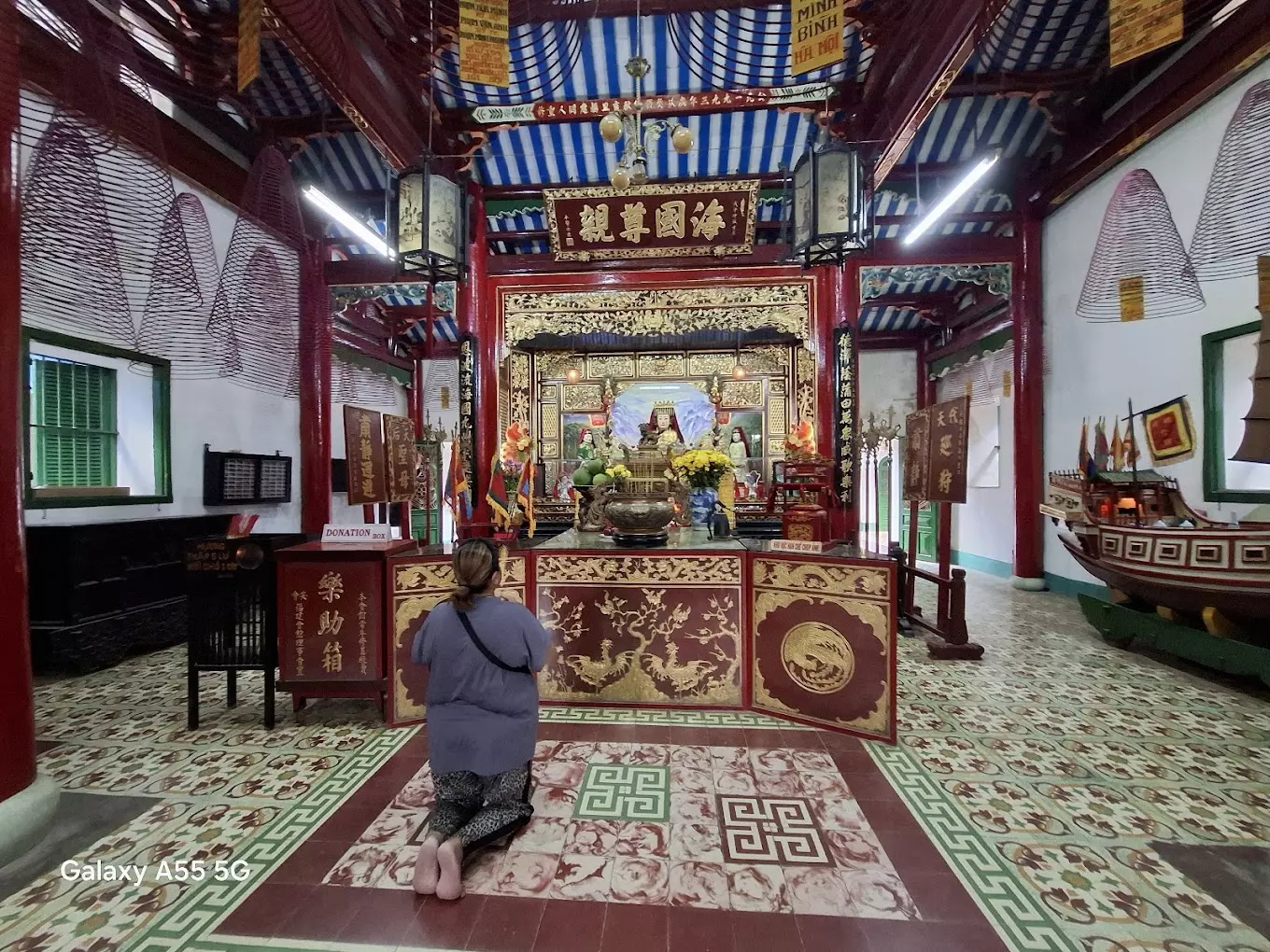
In addition, many engaging activities and festivals take place here, attracting visitors to participate. Particularly, on the 2nd day of the 2nd lunar month, the Chinese community in Hoi An holds a ceremony to honor the God of Wealth, offering various offerings such as paper money, gold and silver, rice wine, and traditional dishes like tam sễ (boiled eggs, crab, and boiled pork).
Things to Note When Visiting the Fujian Assembly Hall
- The Fujian Assembly Hall is a spiritual place. Therefore, if you visit, please dress respectfully and avoid speaking too loudly to show reverence to the deities here.
- The assembly hall is a place for sightseeing and incense burning. Visitors should refrain from bringing food inside to maintain the sacredness of the hall.
- There are large incense burners and offerings for worship within the hall, so you do not need to bring items from outside.
- On holidays, the assembly hall can be quite crowded. When visiting, please be cautious and keep an eye on your belongings.
Conclusion
The above article provides a comprehensive overview of the Fujian Assembly Hall, a renowned spiritual tourism destination in the ancient town of Hoi An. If you plan to visit Hoi An in the near future, this is undoubtedly a must-see location. To fully enjoy all the famous attractions in Hoi An, consider using our Hoi An private car service. With the quality and reputation of PrivateCarTransferHoiAn.com, we promise to deliver a service that will satisfy you.



